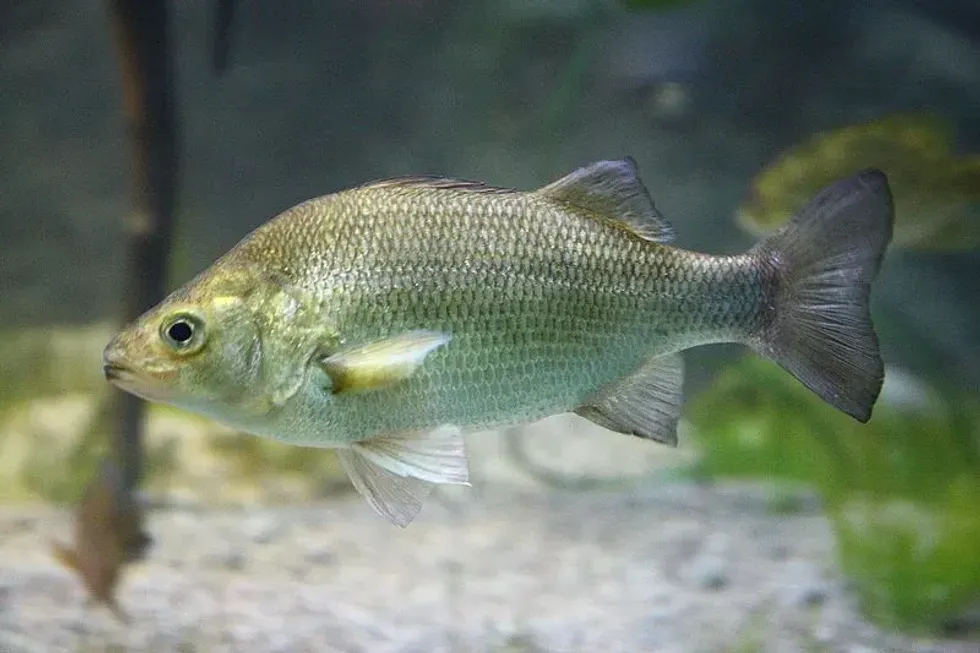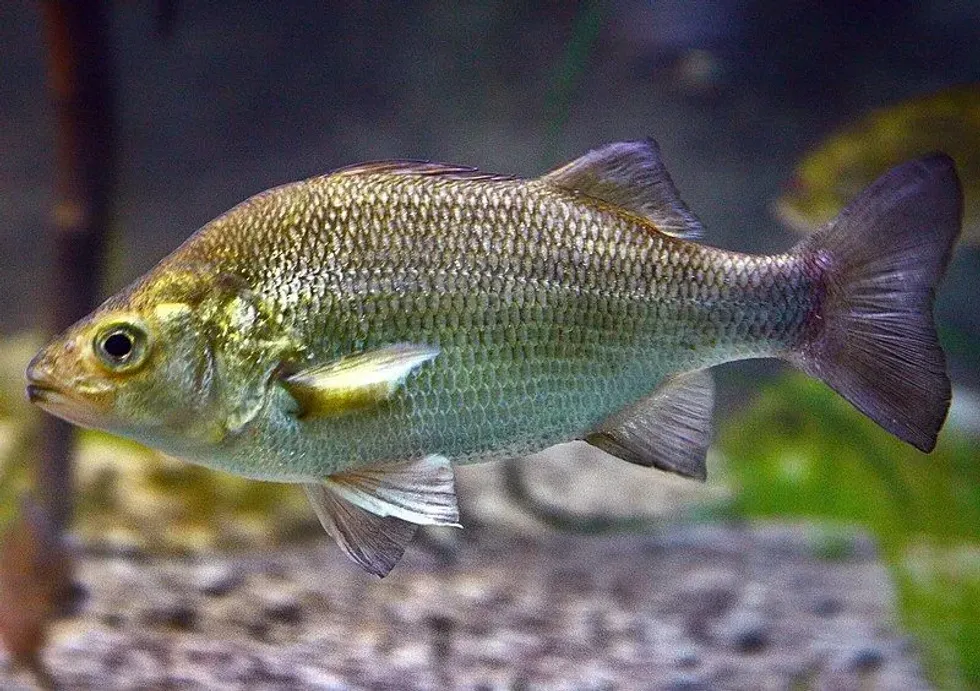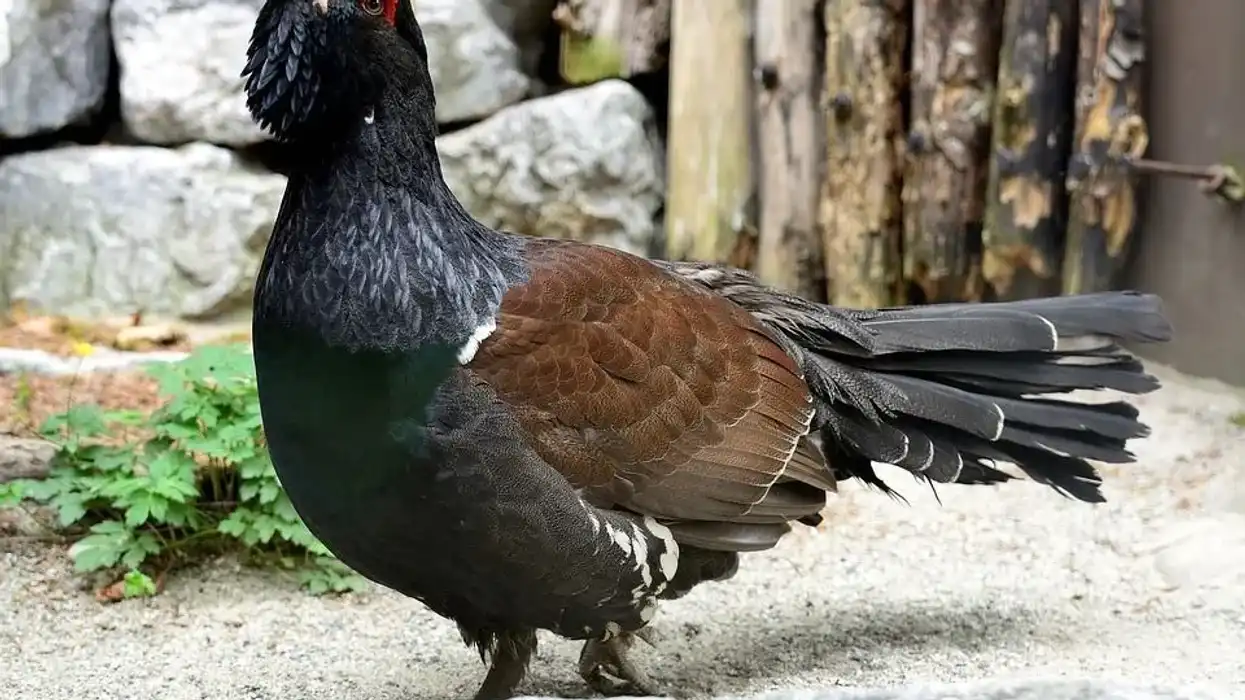Fun White Perch Facts For Kids

The white perch, Morone Americana, is a small fish native to North America with a rapid rate of reproduction. These fish inhabit the Atlantic coast stretching from New Jersey to South Carolina.
The prolific breeder, Morone Americana has been introduced to several of the Great Lakes like Lake Erie, Lake Michigan, Lake Ontario, and other smaller lakes in North America.
The white perch appeared in the Great Lakes in the 1940s. They are thought to have entered through the Erie and Welland canals from the brackish waters of the Atlantic coastal region.
The domed back, white perch has silvery coloration. They can live in freshwater as well as brackish estuary waters of the Chesapeake Bay and its tidal tributaries, freshwater lakes, and ponds. For fisheries, increasing populations of the white perch invasive species is considered a menace.
White perch are often mistaken with crappies. When talking about white perch vs crappie there are few differences.
The white perch is a silvery fish but the crappie has blackish spots and a slight green tint on its body. The white perch and crappies are both found in the tidal waters of the Chesapeake Bay. The white perch fish species is a close cousin of the striped bass, but smaller in size.
You may also check out the fact files on silver dollar facts and marine angelfish facts from Kidadl.
White Perch Interesting Facts
What type of animal is a white perch?
White perch are small fishes that breed rapidly and are considered a nuisance in their aquatic habitats. They are abundantly found in the freshwater Winnebago lakes in Wisconsin, Pennsylvania, Lake Eerie, River Detroit, South Dakota, and Oklahoma. Apart from that, these sport fishes are found all across North America.
The white perch is not a welcome species in most lakes or ponds as they threaten the existence of several other fish species populations like the walleye and white bass. These voracious feeders eat the share of baitfish meant for other species, leaving the native fishes out of food and enough space.
What class of animal does a white perch belong to?
White perch are a species of fish belonging to the class Actinopterygii. They are mainly game fish.
Another perch variety is the yellow perch. When it’s white perch vs yellow perch, there is no chance of mistake as the yellow perch is brownish yellow in color, and has visible vertical black stripes on its body. The white perch has a simple appearance with a silverfish body devoid of any dots or lines.
How many white perch are there in the world?
It is not easy to state the number of white perch in the world as they are abundantly spread all across America in aquatic habitats lakes, rivers, ponds, and brackish waters. Their population is increasing and is of no concern.
Where does a white perch live?
Slow flowing rivers, ponds, lakes, brackish waters in America. They are found in abundance in the midwest, the Winnebago lake system in Wisconsin, Great Lakes, and the Chesapeake Bay estuary.
What is a white perch's habitat?
White perch prefer to live in shallow lakes. They may spend the summer months in 15-20 ft (4.5-6 m) deep in water. In deeper water bodies, white perch populations are found gathered around rocky, submerged islands.
In such places, they may live at the depth of 20-30 ft (6-9.1 m). Sometimes they also live near lake bottoms in soft mud.
In spring, these fishes are mostly found in shoals near vegetated areas in clear water. Perch varieties are also found in slow-flowing rivers and creek pools. These fishes also thrive well in brackish water.
Who do white perch live with?
White perch species of fish are often seen in shoals or groups. They are predators and feed on invertebrates, small fish and their eggs, crayfish, and zooplanktons. These fish feed in groups in their natural habitats in canals, lakes, ponds, bays, reservoirs, and lowland rivers.
How long does a white perch live?
A white perch can live up to 17 years.
How do they reproduce?
The white perch species does not travel to the ocean for spawning and is thus considered to be a semianadromous fish. They are a category of fish that are in between the complete resident fishes and anadromous fishes that go out to the open sea or ocean for reproduction and spawning.
White perch spawning happens in warm freshwater rivers. Spawning begins in March when the river water temperature is suitable.
The adults move to slow-moving upstream rivers with fresh or mild brackish waters for spawning. The female white perch spawn only once a year.
Once the spawning is done the adults, males, and females both migrate downstream. In this species, parents do not wait for the eggs to hatch, or rear the larvae to their adult stage.
The white perch adults prefer waters with salinity levels as high as 4.2 ppt for reproduction. The ideal waters are found in tidal or nontidal, gentle waters. From the mouth of Chesapeake Bay, resident white perch adults travel up to warmer tributaries to spawn.
Spawning happens in April. The eggs are laid by the females in form of long sticky bands. The length of the band depends on the size, nutritional status, and age of the female.
Females wrap the eggs around aquatic vegetation and underwater rocks so that they do not drift away. The males then fertilize the eggs externally. A female can lay 150,000 eggs in a season.
The eggs hatch in about a week. When the larvae are hatched, the yolk sac is attached to their body from which they draw nutrition. When it is finished the larvae feed on zooplankton.
The larvae and the juveniles remain in shallow waters of the river where they were born. The juveniles spend the entire summer and autumn months in the same place. When they grow, the juveniles migrate downstream to live in brackish waters.
What is their conservation status?
The conservation status of the white perch is of Least Concern. These fishes are heavy breeders and their increasing population is considered a menace for several native freshwater fish species.
White Perch Fun Facts
What do white perch look like?

White perch are silvery, freshwater, or brackish water fish. Usually, these fishes grow up to a length of 10-12 in (25.4-30.4 cm) but with plenty of food, white perch size can go up to 17 in (43.18 cm) or more.
The body of these fishes is domed at the back with a dark streak. They are found in plenty throughout the Chesapeake Bay along with its brackish water tidal tributaries.
The white perch range in color from silver-white to pale or olive green. The fish has a dark-colored domed back and narrow dark stripes that run along its sides. White perch may have irregular grayish longitudinal lines running along its body.
This fish found in the Chesapeake Bay has a slightly forked tail and two dorsal fins. Its body is covered in rough, large scales and the dorsal fin closer to the front seems to have spines on it and is much harder than the posterior fin.
The anal fins feature three hard spines. The dorsal fins are separate. The dorsal fin is harder and seems to have spines on them.
White perches have a lower jaw that projects forward slightly. They have small teeth. It resembles the native white bass. The other most popular Moronidae family member, known as the white bass, silver bass, or sand bass is similar in look to the white perch.
When you want to identify white bass vs white perch, look at the dorsal fins. The dorsal fins are erect together in white perch but in white bass, they are erect independently.
White perches are usually smaller than white bass. The body of white bass has faint, gray, horizontal lines running through the body. The body of a white perch does not have any stripes.
Older specimens of the white perch looked different. The color of the back was greenish-gray, brownish-black, and silvery gray. The anal and pelvic fins were pink and orange. These fishes changed in appearance over the years when they were introduced from the open oceans to freshwater rivers and lakes.
How cute are they?
The white perch cannot be called exactly cute. Their diet includes small fish, their eggs, and larvae, so they do not make good tank mates for other fishes. They are rarely kept as pets and are mostly considered sports fish or an invasive species in fisheries.
How do they communicate?
Not much is known about white perch communication methods. These fishes have a sense of sight, smell, and hearing. They can feel vibrations in the water.
How big is a white perch?
Compared to a common carp that can weigh up to 31 lb (14 kg), a large white perch is about 10 times smaller.
How fast can a white perch swim?
The swimming speed of the white perch is about 6.1 in/s (15.5 cm/s).
How much does a white perch weigh?
The general fishing record of adult white perch weight is around 2.5 lb (1.1 kg). The world record white perch weight to date is 3.8 lb (1.7 kg).
What are the male and female names of the species?
The white perch males and females do not have any special names.
What would you call a baby white perch?
Newborn white perches are called larvae and juveniles are called fry.
What do they eat?
The diet of a white perch is not constant. It keeps changing with the season.
This fish species usually feed on bottom-dwelling insect larvae during winter and spring. In the warm summers, their diet mostly includes water fleas, crayfish, shrimp, crabs and small crustaceans, burrowing mayflies, small fish like mud minnows, fathead minnows, fish eggs, and larvae. They even eat detritus or dead organic matter.
Sometimes, the white perch adults feed on only fish eggs threatening the populations of other fish species. In the Chesapeake Bay, these fishes mostly eat bloodworms, grass shrimps, juvenile fish, and razor clams that are abundant in this region.
Juveniles feed on tiny zooplankton, insects, and small crustaceans. White perch are predominantly piscivorous meaning their diet is mostly fish-based. Sometimes, they even show cannibalistic behavior and eat fish of their species.
Are they eaten by humans?
The white perch and yellow perch are both considered to be very tasty panfish. It’s a common topic of debate among fish lovers as to which tastes better. The yellow perch is said to have a milder and sweeter taste.
The white perch taste is strong and fishy, depending on its habitat. The white perch is meatier than the yellow perch. Tributaries draining into bays and brackish estuaries are ideal spots for catching white perch.
Would they make a good pet?
White perch morone Americana does not make very good pets due to their aggressive behavior towards other fishes. In case white perch is kept as a pet in captivity, only a group of fish of the same species should be placed together.
The tank should be of at least ninety gallons, placed away from direct sunlight to avoid excessive growth of algae.
It is better to provide freshwater to these fish as a brackish water captive habitat may be difficult to maintain. White perch diet in captivity may include meaty foods like feeder goldfish, earthworms, tubifex worms, and beef heart.
Did you know...
The white perch is a close relative of the Atlantic striped bass. It is said that each Chesapeake Bay river is inhabited by its resident white perch populations.
These fish do not move far away from the stream ever, where they were spawned. The white perch and the striped bass are among the most popular Chesapeake Bay catches among recreational fishing enthusiasts.
What other fish are white perch a close relative of?
The white perch species is a close cousin of the striped bass, Morone saxatilis. Also known as the striper, rockfish, linesider; this species also belongs to the family Moronidae.
Both species originated on the Atlantic coast of North America. The striped bass has also been introduced to various inland water bodies like the Chesapeake Bay for recreational fishing. Somehow, the Great Lakes do not have large populations of striped bass.
What do white perch eat as they grow older?
Adult white perch eats small fish, ground-dwelling aquatic insects, decaying plant matter, crustaceans, fish eggs, and larvae. Juveniles survive mostly by eating tiny zooplanktons.
Here at Kidadl, we have carefully created lots of interesting family-friendly animal facts for everyone to discover! Learn more about some other fishes from our channel catfish facts and eel facts pages.
You can even occupy yourself at home by coloring in one of our free printable white perch coloring pages.
We Want Your Photos!
More for You
See All
Bachelor of Science specializing in Mass Communication.

Adekunle Olanrewaju JasonBachelor of Science specializing in Mass Communication.
Disclaimer
1) Kidadl is independent and to make our service free to you the reader we are supported by advertising. We hope you love our recommendations for products and services! What we suggest is selected independently by the Kidadl team. If you purchase using the Buy Now button we may earn a small commission. This does not influence our choices. Prices are correct and items are available at the time the article was published but we cannot guarantee that on the time of reading. Please note that Kidadl is a participant in the Amazon Services LLC Associates Program, an affiliate advertising program designed to provide a means for sites to earn advertising fees by advertising and linking to Amazon. We also link to other websites, but are not responsible for their content.
2) At Kidadl, we strive to recommend the very best activities and events. We will always aim to give you accurate information at the date of publication - however, information does change, so it’s important you do your own research, double-check and make the decision that is right for your family. We recognise that not all activities and ideas are appropriate for all children and families or in all circumstances. Our recommended activities are based on age but these are a guide. We recommend that these ideas are used as inspiration, that ideas are undertaken with appropriate adult supervision, and that each adult uses their own discretion and knowledge of their children to consider the safety and suitability. Kidadl cannot accept liability for the execution of these ideas, and parental supervision is advised at all times, as safety is paramount. Anyone using the information provided by Kidadl does so at their own risk and we can not accept liability if things go wrong.
3) Because we are an educational resource, we have quotes and facts about a range of historical and modern figures. We do not endorse the actions of or rhetoric of all the people included in these collections, but we think they are important for growing minds to learn about under the guidance of parents or guardians.







